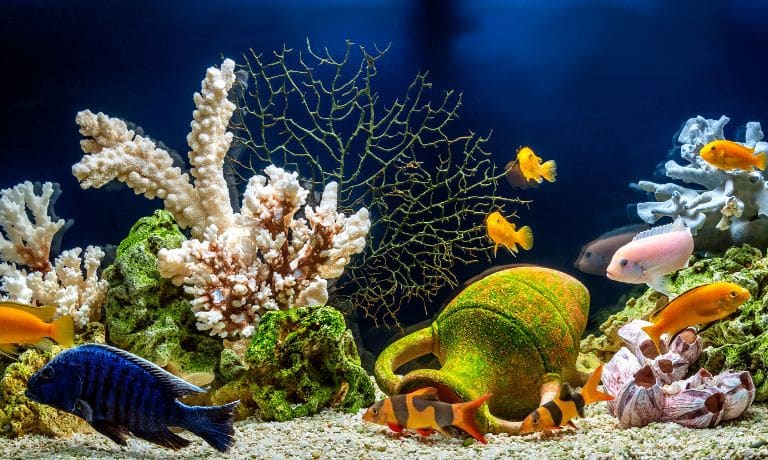
Most fish hobbyists know that they have to monitor pH, ammonia, and nitrate levels in their tanks. However, when it comes to freshwater tanks, you need to be monitoring the general hardness (GH) and carbonate hardness (KH) of your tank. If not, you may be putting your fish at risk. To help you ensure that your fish’s environment is suitable enough to maintain their health and happiness, this article will review the differences between KH and GH in aquariums.
What Is General Hardness (GH)?
When referring to the hardness of water, what is being referred to is the level of minerals in a given body or sample of water. The primary minerals to monitor are calcium and magnesium. Generally, these minerals are measured in degrees of hardness (dGH) or can also be measured in parts per million (ppm), depending on the test kit. Each breed or species of fish needs a specific level of hardness to be healthy, but the general hardness level should be between four to eight dGH or 10 to 140 ppm.
What Is Carbonate Hardness (KH)?
KH refers to carbonate hardness and is also measured in degrees of carbonate hardness (dKH) or ppm. However, KH measures the levels of carbonates and bicarbonates in the water. It is important to note that your KH levels directly impact your pH levels, as carbonates and bicarbonates neutralize the acid. The higher your KH levels, the lower your pH levels will be. Much like the levels of GH, KH levels should generally be held between four to eight dKH. Again, some fish are particular about these levels, so be aware of their particular needs first.
Why Are They Important to My Fish?
A swing in carbonate hardness levels can severely decrease or increase the pH levels in your water, quickly killing your fish. However, the general hardness levels in your tank can impede your fish’s growth and quality of life. If your shrimp have trouble molting, your snail’s shells are pitted or flaking, or you notice your fish aren’t as vibrant and lively as usual, this can be a sign that your GH isn’t at the right levels. Magnesium and calcium are critical for bone and exoskeleton growth as well as immune system management, so a lack of these minerals will make your tank’s inhabitants very ill.
How Do I Monitor These Levels?
Luckily, monitoring these levels is very easy, as many water quality test kits will tell you exactly what you need to know. Ideally, you have test kits already on hand, as they’re a part of the essential supplies needed for a freshwater tank. However, you may need to increase or decrease these levels at some point. To increase carbonate hardness, you can crush up limestone or coral to increase the levels of carbonates and bicarbonates. If you need to increase general hardness, you can use mineral supplements made for aquariums. To lower GH or KH levels, you can use a water softener.
Now that you know the differences between KH and GH in aquariums, you’re better equipped to replicate your fish’s natural-born environment and give them the healthy and happy lives they deserve.




